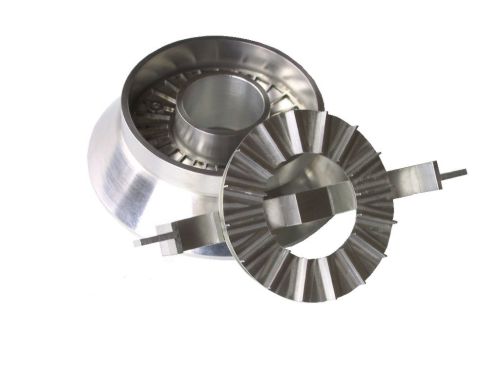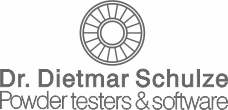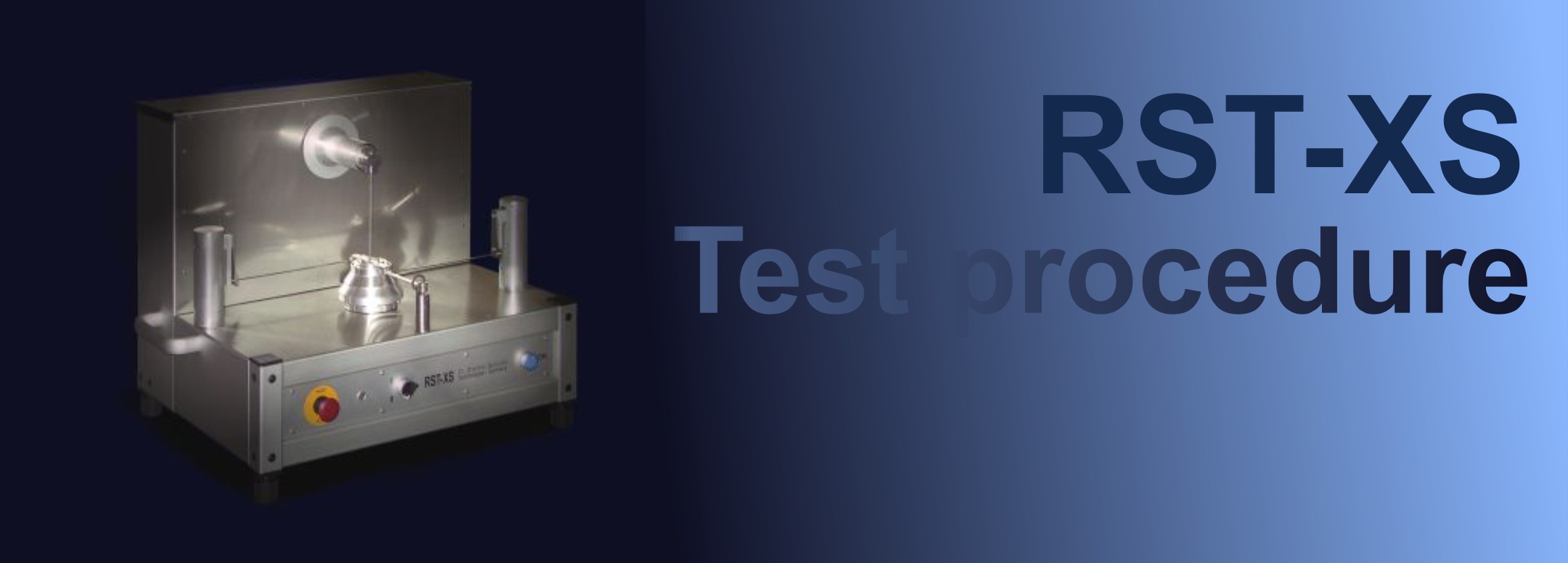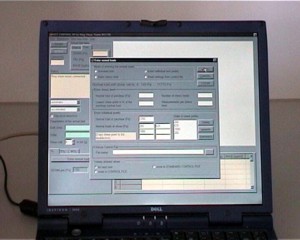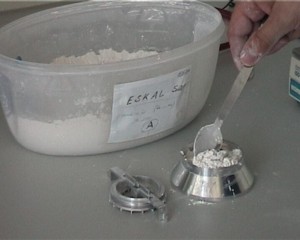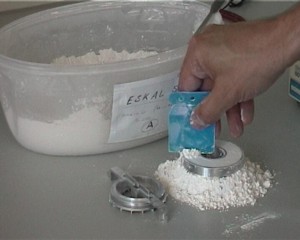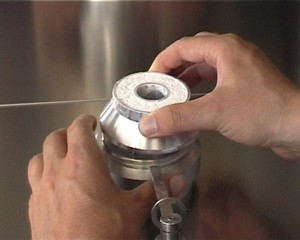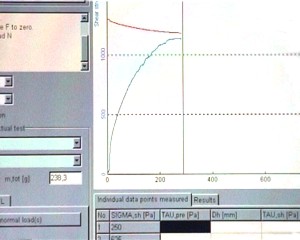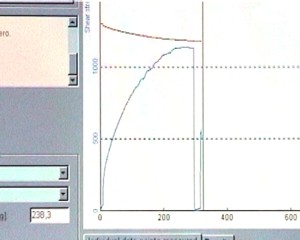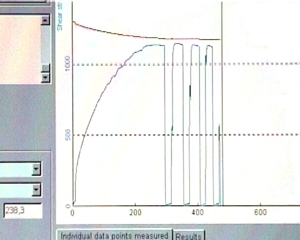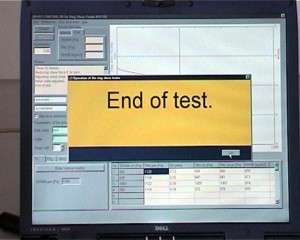Setup of Ring Shear Tester RST-XS
The main part of the Ring Shear Tester is the shear cell (1), which contains the powder specimen. On the image above a standard shear cell with a specimen volume of 30 ml is placed on the tester.
The powder specimen is covered by a lid. The lid is subjected to a vertically acting force (normal force) in order to apply the stress level required for the test. For the adjustment of the normal force serves the computer-controlled normal load system (2).
For consolidating the powder specimen and for measuring its strength, respectively, the powder specimen is subjected to a shear deformation. For this the bottom ring of the shear cell is rotated while the lid is prevented from rotation. The latter is achieved by two tie rods, which are connected to the lid of the shear cell as well as to the load beams (3). The load beams serve for the measurement of the shear stress in the powder specimen.
Since both the bottom of the shear cell and the underside of the lid are rough or provided with vanes protruding into the powder (see image to the right), the rotational movement of the shear cell relative to the lid causes shear deformation of the powder specimen.
